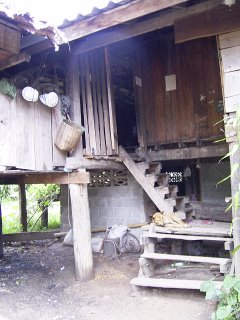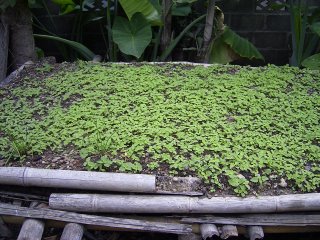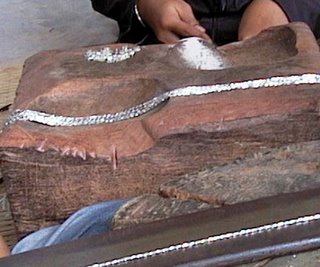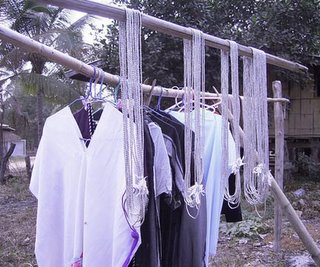
The seating area was divided into sectioned mats for the different streets or sub-neighborhoods in the village. We greeted a few different neighborhood leaders before I saw Tutara who had saved us a seat next to his family.

We sat in silence, listening to the Buddhist mantras. My dad explained to me that this was the first day, and that the monk will stay to continue chanting non-stop for seven days and nights. The prayers explain the life of the Buddha. It is done at least once a year to ensure the village’s health and for prosperity, and for everyone world-wide to be generally at peace.
Some villagers sat with candles in front of them, while others lit candles outside. After a while, we went out to the fish ponds with Tutara & his son, Sudee (Tutara’s brother-in-law) and Sudee’s nieces Jajan and Jahaair to feed the fish. It was a special occasion, so the village fishes were eating coconut shavings and rice that had been blessed by the monks.
With our spirits rekindled, we reflected on what an honor it was to have participated in such an event. As we were leaving, I asked Tutara if the village heart will be closed by the time we come back. He laughed and said, that while the doors to the building may be closed, the true “heart of the Karen village” is never closed so long as there are people who care.










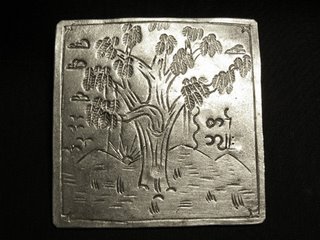



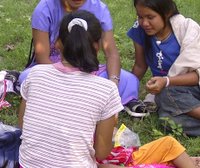
 Shiana's featured artist is Nija, a silversmith behind some of our most popular pendants, like the rising sun, new day song, and ying-yang coils.
Shiana's featured artist is Nija, a silversmith behind some of our most popular pendants, like the rising sun, new day song, and ying-yang coils. 


